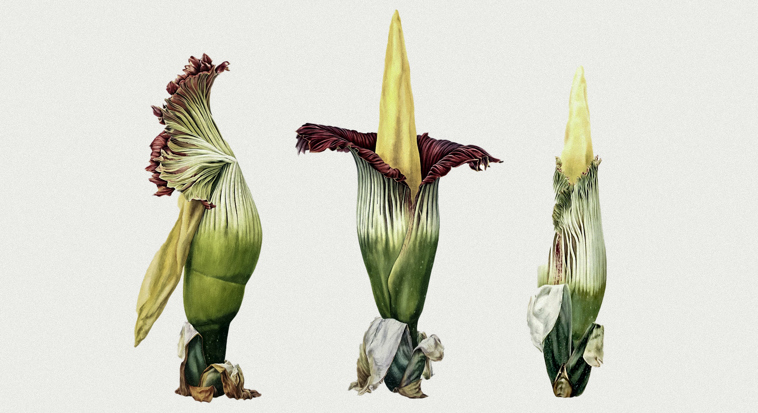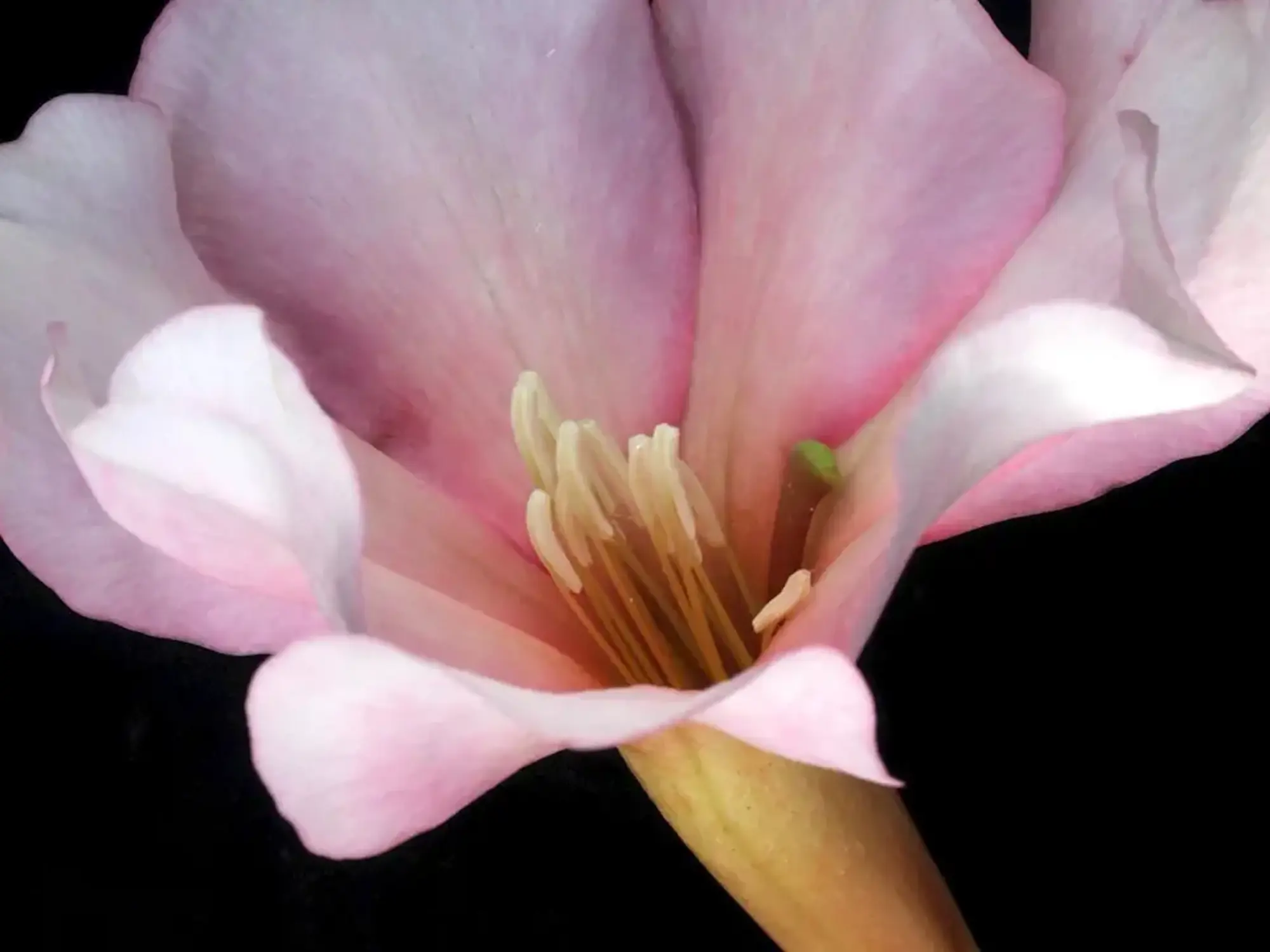Thursday, 12 September 2024, 9.30am-5pm
RBGE Library & Herbarium, 20a Inverleith Row, Edinburgh EH3 5LR
FULLY BOOKED
Organised by Xuelei Huang (University of Edinburgh) in collaboration with Siôn Parkinson (RBGE). Supported by the University of Edinburgh and RBGE, and generously funded by The Royal Society of Edinburgh.
This one-day workshop will delve into the botanical smellscapes of Scotland—olfactory environments made up of diverse scents from various natural sources. In the morning, participants will engage with presentations by historians and artists that explore these themes within a cultural context, followed by a rare, nose-led tour of the RBGE Herbarium and Rare Books Room. The afternoon will include an eco-sensory workshop by Tarsh Bates, followed by a smell scavenger hunt within the Garden led by Yiwei Chen. The day will conclude with a visit to the Fungi Forms exhibition at Inverleith House Gallery.
This event is the third and final instalment in a series of workshops dedicated to exploring Scotland’s rich smell history and heritage. The aim is to bring together a diverse group of participants, including academics, museum and heritage professionals, artists working with scent, and members of the public, to explore the deep connections between Scottish smells, history, biodiversity, and identity.
Please note, this event is now fully booked.
 Siôn Parkinson, artist and RBGE Research Fellow, inhaling the 'honey-scented' aroma of a fly agaric (Amanita muscaria) fungi specimen in the RBGE Herbarium. Image: RBGE, 2024.
Siôn Parkinson, artist and RBGE Research Fellow, inhaling the 'honey-scented' aroma of a fly agaric (Amanita muscaria) fungi specimen in the RBGE Herbarium. Image: RBGE, 2024.
Programme Summary
- 09:15-09:50 — Registration & Welcome. RBGE Balfour Building, Conference Room (find us)
ACADEMIC SESSION 10am-12:15pm
- 10:00-10:05 — Introductory remarks. Will Tullett (University of York, Chair); Lorna Mitchell (Head of Library and Archives, RBGE)
- 10:05-10:30 — Heritage Reeks: Engaging Audiences with the Alluring Aromas of Death and Decay at the Royal Botanic Garden Edinburgh. Siôn Parkinson (RBGE)
- 10:30-10:55 — The Fragrance from Afar: Chinese Smells in Scottish Gardens. Xuelei Huang (University of Edinburgh)
- 10:55-11:20 — Cultivating Sustainable Floriculture through Sensory Exploration: A Research Agenda for Scotland’s Daffodil Trade. Ka-kin Cheuk (University of Southampton)
- 11:20-12:15 — Nose-led tour of the RBGE Herbarium & Library
- 12:15-13:00 — LUNCH
PUBLIC WORKSHOP 1pm-4:45pm
- 13:00-13:45 — Scents of Solastalgia: An Eco-sensory Workshop. Led by Tarsh Bates (Umeå University, Sweden)
- 13:45-15:00 — Smell Scavenger Hunt. Led by Yiwei Chen (South China Agricultural University)
- 15:00–15:45 — Discussion (with tea/coffee and cake). Led by Tarsh Bates and Yiwei Chen
- 15:45-16:45 — Exhibition visit: Fungi Forms (Inverleith House Gallery). Introduction by Siôn Parkinson at Balfour Building, followed by a self-led tour

The 'candyfloss-scented' foliage of the katsura tree (Cercidiphyllum japonicum), native to China and Japan, thrives in the Royal Botanic Garden Edinburgh. Image: Peganum, via Wikimedia Commons, CC BY-SA 2.0
About the Speakers
Dr Tarsh Bates was born in Mununjali/Beaudesert, Yugambeh/Queensland, grew up in Matamata, Aotearoa/New Zealand, and lived for the last 35 years in Perth, Whadjuk Nyungar Boodja/South-Western Australia. They recently moved to Ubmeje/Umeå, Sápmi, the lands of the Sami people in northern Sweden. They have worked as a pizza delivery driver, a fruit and vegetable stacker, a toilet-paper packer, a compost researcher, a honeybee ejaculator, a gallery invigilator, a raspberry picker, an academic, an editor, a bookkeeper, a car detailer, and a life drawing model. They explore olfaction as tool for navigating environment and climate change.
Dr Yiwei Chen is a lecturer and master’s supervisor at South China Agricultural University (2018-) and an academic visitor at UCL Institute for Sustainable Heritage (2023-2024) focusing on historical smell. Her primary research interest is smellscapes of Chinese historical gardens, especially Jiangnan and Lingnan gardens in the Ming and Qing Dynasties (1368-1912). She focuses on smellscape as ancient Chinese greatly emphasised creating pleasant olfactory environments in gardens, a topic that is under-researched. She explores the design methods of smellscape in Chinese historical gardens, the unique olfactory aesthetics of ancient China, as well as the archiving and recreating of smellscapes in garden heritages and paintings. Her research interest also includes comparing smellscapes in Chinese and English gardens in the 18th to 19th centuries.
Dr Ka-Kin Cheuk is a Lecturer in Anthropology at the University of Southampton, specialising in migration, transnationalism, diaspora, environment, and sustainability, with a focus on China, Hong Kong, India, the Middle East, and the UK. He has conducted extensive ethnographic research on the Sikh diaspora in Hong Kong and Indian traders in southeast China. Currently, he is working on a project exploring the sustainable development of transnational flower industries. From September 2024, he will supervise PhD students on two interdisciplinary environmental studies projects funded by Leverhulme and NERC. Recent publications include contributions to The Handbook of Research Methods in Migration (Elgar, 2024) and The Oxford History of Hinduism: Hindu Diasporas (Oxford, 2023).
Dr Xuelei Huang is Senior Lecturer in Chinese Studies at the University of Edinburgh. She is the Principal Investigator of the Smell of Scotland: History, Heritage, and Practice project (funded by the Royal Society of Edinburgh, 2024). Her research focuses on sensory history and film history in modern China. Her book publications include Scents of China: A Modern History of Smell (Cambridge, 2023), Sensing China: Modern Transformations of Sensory Culture (co-edited with Shengqing Wu, Routledge, 2022), Shanghai Filmmaking: Crossing Borders, Connecting to the Globe, 1922–1938 (Brill, 2014).
Dr Siôn Parkinson is a visual artist, performer, composer, and writer about our sensory relationship with the more-than-human world, especially fungi. His book Stinkhorn: How Nature’s Most Foul-Smelling Mushroom Can Change the Way We Listen is published by Sternberg/MIT Press. Siôn joined the Royal Botanic Garden Edinburgh in January 2024 as an Early Career Research Fellow. His two-year study, which is funded by the Arts and Humanities Research Council (AHRC), is titled Fragrance in the Fungarium: A Creative Approach to the Olfactory Heritage of Mushrooms.
Dr William Tullett is Lecturer in Early Modern History at the University of York. He is the Co-Investigator of the Smell of Scotland: History, Heritage, and Practice project. He has published two books – Smell in Eighteenth-Century England: A Social Sense (Oxford, 2019) and Smell and the Past (London, 2023) – and several articles on the histories of smells. He was one of the work-package leads for the major EU Horizon 2020 project Odeuropa (2021-2023), which explored Europe’s smell history and heritage. He is currently working on a major new history of smells across time and place for Yale University Press.

Life-size botanical triptych of the smelly titan arum or 'corpse flower' (Amorphophallus titanum), the largest inflorescence on Earth, which first flowered in the RBGE Glasshouses in 2015. Işık Güner, Jacqui Pestell, and Sharon Tingey (2017). Image: RBGE.
Contact
Siôn Parkinson: sparkinson@rbge.org.uk
Xuelei Huang: xuelei.huang@ed.ac.uk


